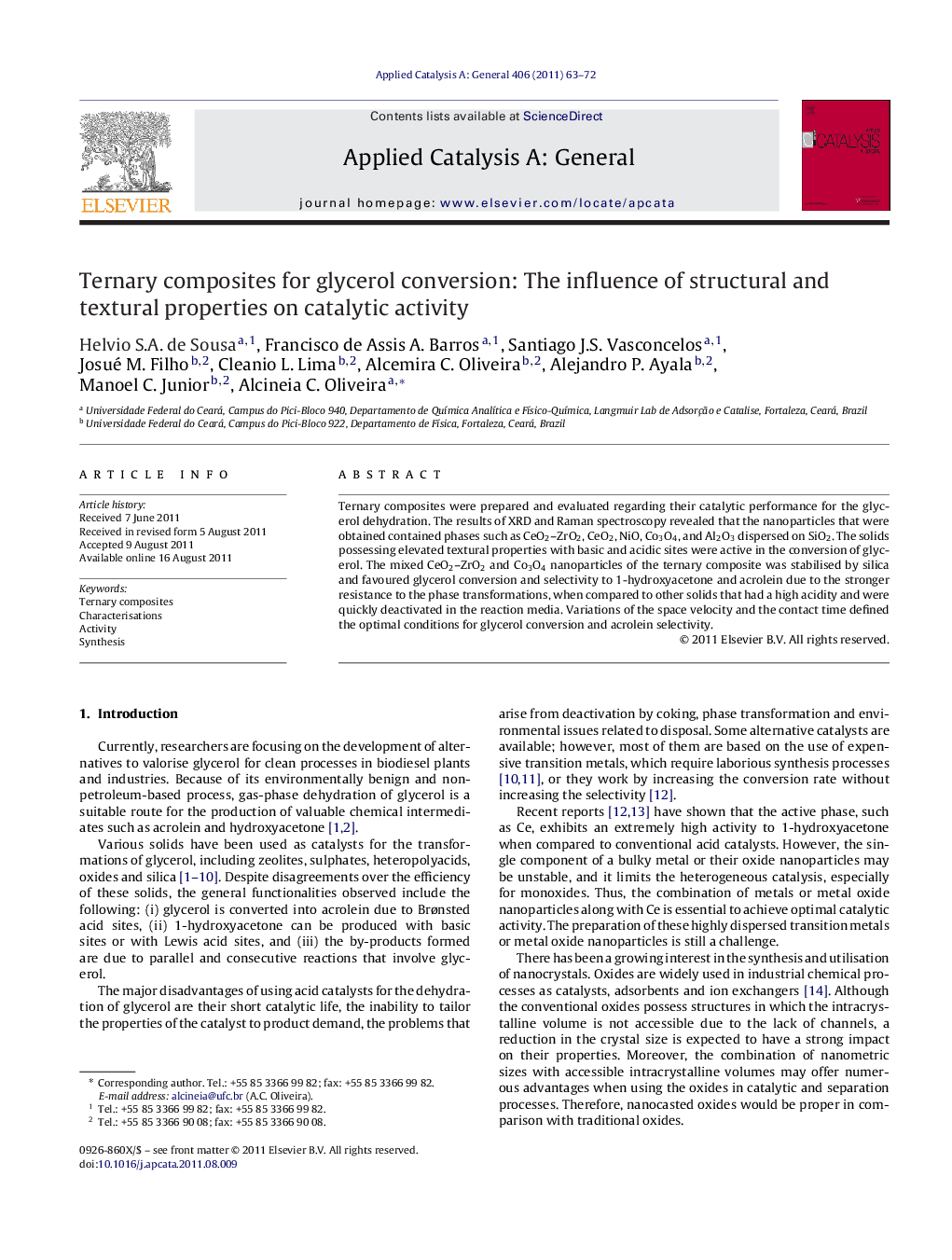| Article ID | Journal | Published Year | Pages | File Type |
|---|---|---|---|---|
| 41223 | Applied Catalysis A: General | 2011 | 10 Pages |
Ternary composites were prepared and evaluated regarding their catalytic performance for the glycerol dehydration. The results of XRD and Raman spectroscopy revealed that the nanoparticles that were obtained contained phases such as CeO2–ZrO2, CeO2, NiO, Co3O4, and Al2O3 dispersed on SiO2. The solids possessing elevated textural properties with basic and acidic sites were active in the conversion of glycerol. The mixed CeO2–ZrO2 and Co3O4 nanoparticles of the ternary composite was stabilised by silica and favoured glycerol conversion and selectivity to 1-hydroxyacetone and acrolein due to the stronger resistance to the phase transformations, when compared to other solids that had a high acidity and were quickly deactivated in the reaction media. Variations of the space velocity and the contact time defined the optimal conditions for glycerol conversion and acrolein selectivity.
Graphical abstractFigure optionsDownload full-size imageDownload high-quality image (131 K)Download as PowerPoint slideHighlights► High surface area ternary composites. ► Phases such as CeO2, ZrO2, NiO, Co3O4, Al2O3 and SiO2 were found. ► Composites mixed CeO2–ZrO2 and Co3O4 nanoparticles. ► Favoured glycerol conversion and acrolein selectivity.
